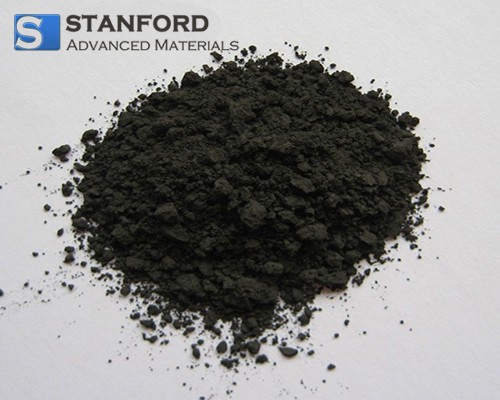Introduction
Zirconium carbide, with the chemical formula ZrC, has a theoretical carbon content of 11.64%. It belongs to the typical NaCl type face-centered cubic structure. The atomic radius ratio of C atoms and Zr atoms is 0.481, which is less than 0.59, forming a simple interstitial phase. The Zr atoms form a compact cubic lattice, and the C atoms are located in the octahedral interstitial positions of the lattice.
The melting point of zirconium carbide is 3540℃, the theoretical density is 6.66g/cm3, and the thermal expansion coefficient is 6.7×10-6℃-1. It is insoluble in hydrochloric acid, but soluble in nitric acid. Zirconium carbide is a key material for the preparation of high-performance cemented carbide, aerospace, atomic energy, textiles, electronics, coatings, hard films and metallurgical automation and other high-tech fields.

Advantages
Zirconium carbide has the advantages of high surface activity, high temperature resistance, oxidation resistance, high hardness, good thermal conductivity, good toughness, etc., and has the characteristics of efficient absorption of visible light, a reflection of infrared rays, and energy storage. It is an important high-temperature structural material.
Using ultra-high-purity zirconium dioxide and high-purity carbon black as raw materials, and applying core technology and alloying and sintering technology to prepare, can ensure the purity, low oxygen content, and low free carbon of zirconium carbide powder. The prepared ZrC powder has densified grains, stable phase composition, uniform particle size, and stable quality.
Application
1. Zirconium carbide is added to rubber, plastics, polyethylene, acrylonitrile-butadiene-styrene copolymer ABS plastics, transparent plastics, resins, polyurethane materials, and other materials for manufacturing related products. As an additive, zirconium carbide can greatly improve the strength, high-temperature resistance, and drop resistance of plastics and related materials.
2. Adding a certain proportion of zirconium carbide to Zr-Ti alloy, C/C-(Zr-Ti-C-B/SiC) composite material, and Zr-Ti-C-B ceramic material can be made into a ceramic coating resistant to 3000℃ ablation and its composite materials. The composite material made in this way exhibits superior ablation resistance and thermal shock resistance and is a new type of material for key components of hypersonic aircraft, which is now widely used in the military and aerospace fields.
3. Zirconium carbide has the characteristics of heat absorption and heat storage. Therefore, it can be used to manufacture solid propellants in rocket engines, to produce metal zirconium and zirconium tetrachloride, and as abrasive.
4. Zirconium carbide is used for U-shaped ZrC-graphite composite ceramic combined heating element. This heating element has high heating efficiency, good energy saving effect, small occupied volume, low cold end temperature, and stable electrical performance; under vacuum, neutral or reducing atmosphere, it can provide a high-temperature environment above 2000 ℃; it has good It has excellent thermal shock resistance, high thermal efficiency, and fast heating rate, and can be raised from room temperature to 2000 ° C in 120 minutes; it can be used for thermal shock resistance test of ultra-high temperature refractory materials.
5. Zirconium carbide is used for zirconium carbide composite ceramic sensors. This sensor has high mechanical strength, is not easy to deform and volatilize at high temperatures, and has stable electrical performance and long service life; in a vacuum or protective atmosphere, it can more accurately measure ultra-high temperature ambient temperature below 3000 °C; it is the temperature sensing element with the highest temperature measurable in the contact sensor.
For more information, please visit https://www.samaterials.com/.
